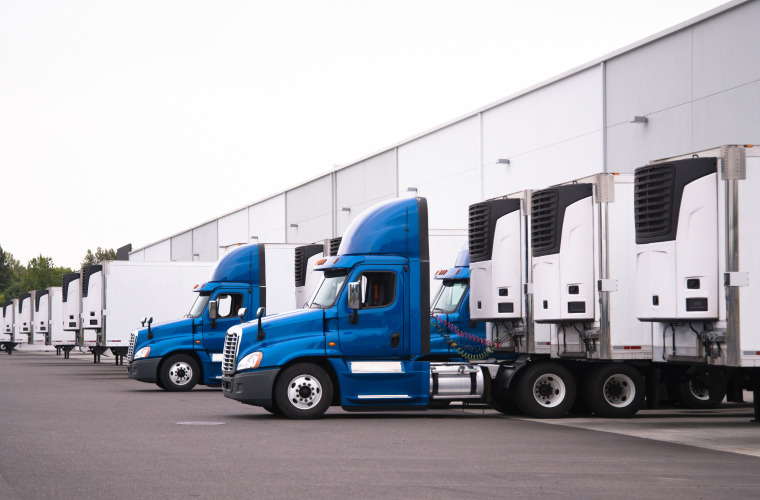6 Takeaways from CSCMP EDGE 2022 to Improve Shipping Efficiency

CSCMP EDGE 2022 was one for the books. The conference, held in Nashville this year, is a place for supply chain professionals to gather, discuss transportation challenges, and brainstorm creative solutions–the perfect place for us to introduce our patented technology. We sent some of the Flock Freight team to share the benefits of shipping shared truckload (STL)–like saving up to 20% more and helping lower carbon emissions. We also hosted an executive luncheon where Flock’s CRO, Justin Turner, spoke about shipping challenges and how to overcome them. Between those and the many other informative sessions, there were loads of valuable freight content to be had. 😉

If you couldn’t make it or simply want a refresh on what was covered, below are 6 key takeaways from CSCMP EDGE 2022.
1. Shippers are suffering from supply chain inefficiencies.
In 2021, supply chain inefficiencies were caused by unoptimized trucking routes, trans-loading, high damage, changing size restrictions, and accessorials. Let’s dive in a little deeper into how these inefficiencies impact shipping operations:
- Unoptimized trucking routes add unnecessary mileage, increase carbon emissions, and slow down freight shipments. These routes are often indirect and zigzag through hubs and terminals.
- With transloading, less than truckload (LTL) and volume LTL (VLTL) shipments move freight from truck to truck during shipment. This increases the risk of damage, loss, and delays with shipments.
- Changing size restrictions requires carriers and shippers to constantly adjust shipments, wasting time and money. The current hub-and-spoke network isn’t optimized for large, bulky shipments–causing problems for shippers with midsize freight, or “partials.”
- Accessorials are tools LTL carriers use to disincentivize shippers from moving large, bulky freight through the hub-and-spoke network, and in turn significantly impacting the cost of shipping. In 2021 alone, LTL shippers spent an average of $411,239 on accessorials.
While labor shortages are often out of your control, these inefficiencies breaking supply chains have attainable–and often simple–solutions. As we head into the upcoming holiday season, we’ve outlined some steps you can take to strengthen your supply chain in our 2022 Peak Season Guide.
2. LTL shippers are facing an increase in late deliveries.
Delays averaged 1 to 2 days in 2021, with some freight arriving 5 to 6 days late. Shippers at CSCMP EDGE told us that often, these delays were due to damages.To combat late delivery, expect delays and plan ahead by factoring in the entire transit time for moving your goods.
3. Damaged goods are causing the need to replace and reship.
Flock’s study with Drive Research found that 26% of LTL shippers say they “often” replace and reship damaged goods while 45% had to reship “sometimes.” Freight damage is more common with LTL and VLTL services because they involve more handling than other shipping modes–often LTL will have 4-5 separate transloading points. By shipping via shared truckload, shippers incur 5.7x less damage than traditional LTL.
4. LTL inefficiencies lead to underutilized truckloads and cause truckload waste.
Many shippers we spoke to at CSCMP EDGE mentioned growing concerns and frustrations with excess LTL fees and accessorials. Some have tried switching to TL to avoid these fees, but like we saw in our research study, more than 51% of trucks on the road aren't actually full. Booking TL can potentially help shippers avoid accessorial and OTIF fees, the cost of moving trucks that aren’t full offsets any potential savings. To cut down on shipping costs and lower prices, shippers should avoid underutilized truckloads (TL) and build strategies around reducing accessorial and OTIF fees–if you need help finding a more efficient shipping method, connect with us!
5. Shippers are looking for ways to reduce their carbon footprint.
Environmental impact is top of mind for the shippers we spoke with at CSCMP EDGE. Most of the inefficiencies mentioned are increasing carbon emissions, wasting energy, and multiplying environmental risks. Shippers can begin to reduce their carbon footprint by eliminating transloading, reducing damage, and shipping along optimized routes. Sounds like a lot, right? Luckily, shipping shared truckload can help solve these inefficiencies and in turn make your supply chain more sustainable.
6. Shared truckload is the solution to fast and cost-efficient shipping for midsize freight.
The overall sentiment from CSCMP EDGE is that many shippers are unsatisfied with their current process for shipping midsize freight–it’s time for a better alternative.Shared truckload (STL) enables several shippers to share trailer space in one multi-stop full truckload. The benefits of shared truckload extend beyond transit time into cost efficiency. With STL, shippers only pay for the space they need and will never see rate changes since there is no need to designate class or cube. By maximizing efficiency, STL gives shippers faster and cheaper shipping in the midst of supply-chain disruptions and fluctuating market conditions.
Apply these takeaways to your supply chain operation.
CSCMP EDGE gave us a lot to think about. 🤔 We've identified the inefficiencies in supply chains and know which ones we can control. Now, it's time to act. Here's what you can do now to start optimizing your supply chain operation today:
- Identify inefficiencies in your operation.
- Learn how STL can earn you more and save you time with every load.
- Prepare for the upcoming holiday season by downloading our 2022 Peak Season Shipping Guide.
- Share these takeaways with your team and freight network.
- Book a demo to discover how Flock Freight can work for you.



